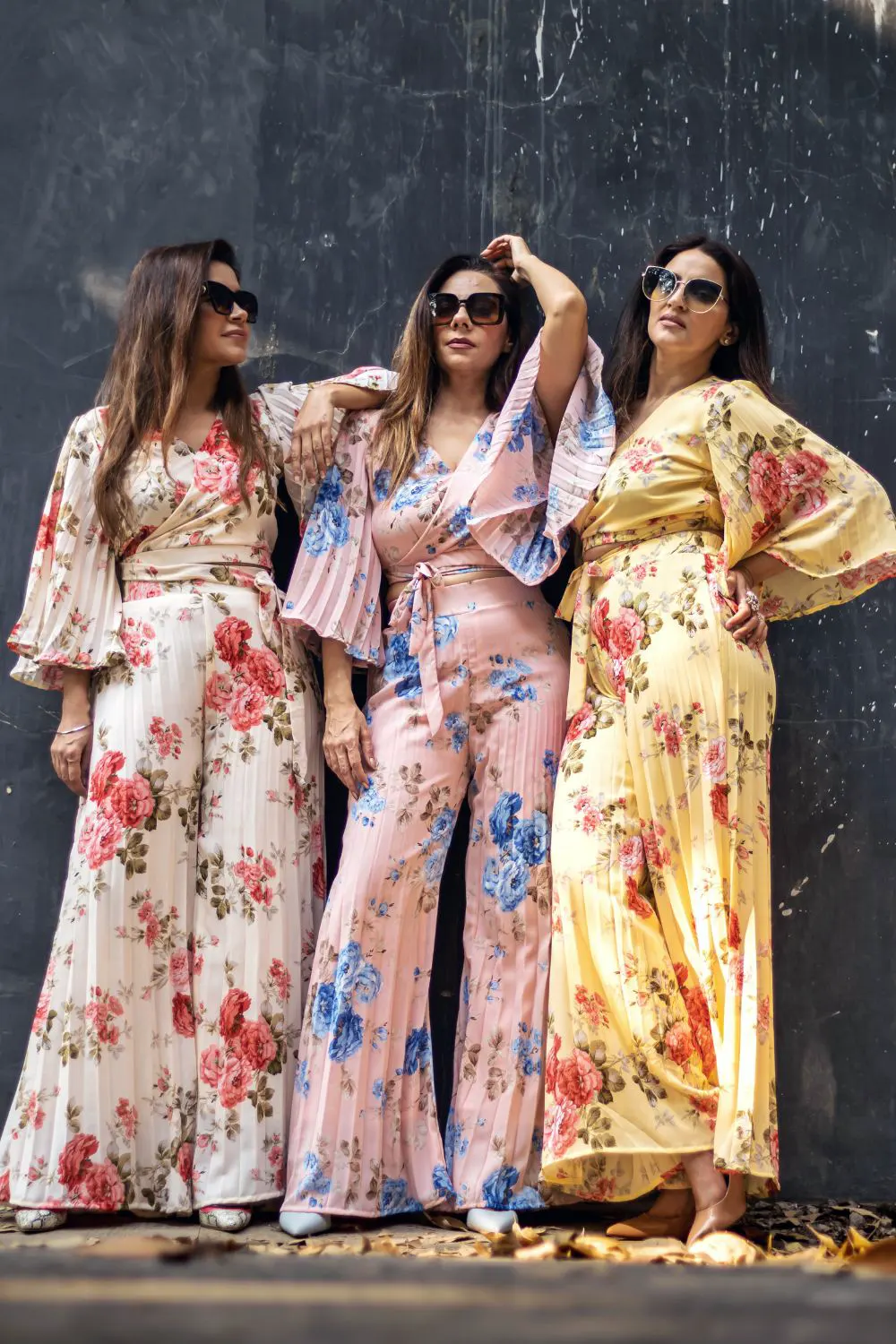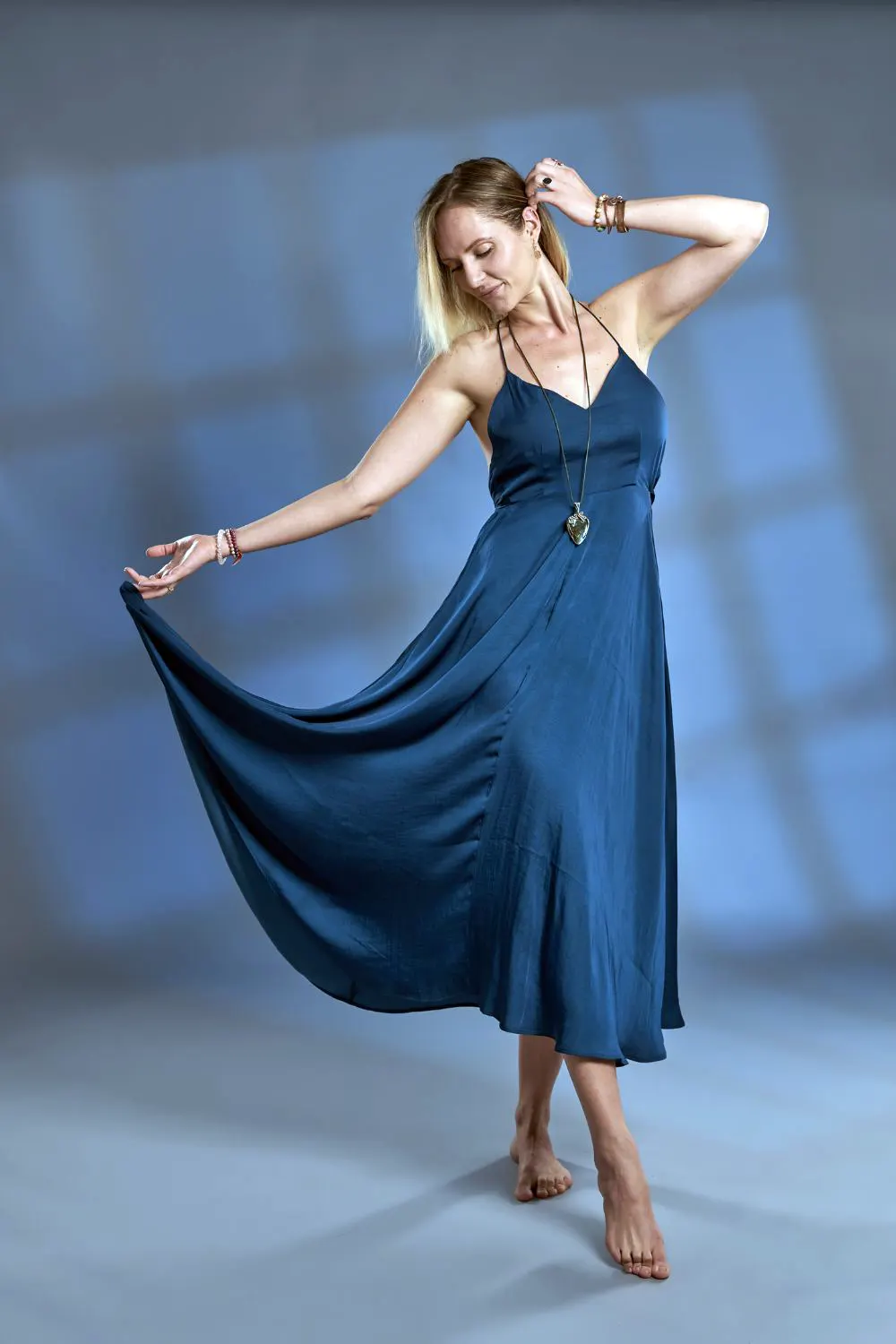For centuries, dresses formed the customary garb for women across cultures. Socioeconomics influenced dress selection, too. Affluent families dressed daughters in intricate styles, while poorer ones managed simpler designs.
As times changed, dresses maintained relevance. They symbolize femininity through countless silhouettes, from understated to glamorously extravagant. This allows women to feel attractive, expressing personal flavour.
The function also favours dresses. They cover modestly where pants may not, fulfilling religious and discreet needs. Loose cuts concur ease and mobility, whether active or at rest.
Certain faiths advise dresses for their ability to engender reverence within sacred spaces better than other attire. The calm spirit they induce aligns with spiritual observance.
Not all women choose dresses, but some cultural traditions mandate them on formal or heritage occasions. Dresses thereby honour conventional forebears.
So, while fashion plays a role, intrinsic factors maintain dresses in a woman’s closet. Their versatility caters to comfort, propriety, and tradition in ways facilitating self-expression and cultural preservation alike.
Multiple motives contribute to this item of clothing retaining relevance today as in the past. Let’s check them one by one.
Why do ladies wear dresses?
Historical and cultural norms
Dresses have been the typical choice of clothing for ladies over the centuries due to their practical benefits. From ancient times, dresses served women well with their simplicity and versatility.
Whether made from affordable materials like linen in Egypt or silk in India, dresses could be worn for any job or event effortlessly.
Dresses allowed ancient Greek ladies to move freely while completing household chores. Their simple peplos style needed no fasteners and could be wrapped around the body in different patterns daily.
Similarly, medieval European dresses provided much-needed protection from harsh weather during outdoor work. Wool fabrics kept ladies warm while still permitting body movements.
Victorian-era dresses, though elaborate, remained convenient options. Extra layers provided insulation as temperatures varied throughout the day. Built-in pockets saved ladies from carrying bulky purses everywhere.
Even colorful Indian kurtas granted comfort through hot summers and easy draping styles.
Today’s dresses offer just as many rewards. From linen sundresses to warm sweater dresses, short styles to long maxi lengths, choices cover every body type and climate.
Dark hues pair with dressy occasions, while bright shades suit casual events. Most importantly, dresses let ladies dress in a single item, saving valuable time in the morning rush.
Across lands and generations, dresses endured because of their user-friendly design. Whether worn by Egyptian peasants or English queens, these flexible garments suited every woman’s functional needs perfectly.
Dresses just make daily life more practical while retaining ladylike charm through the ages.

Fashion and style
Dresses give ladies a way to show their own individual style. Studies show that women pick dresses when they want to feel good about themselves. A short dress may make a person seem fun. But a long dress can make them seem graceful.
In the past, too, dresses let women express themselves. Flapper dresses of the 1920s helped ladies feel independent. Mini skirts in the 1960s showed a free attitude.
Power suits in the 1980s let workers challenge male roles. Baggy grunge dresses of the 1990s felt comfortable. Now athleisure dresses suit workouts and relaxing.
Choices are endless now. Dresses come in modern cuts or classic looks. Fabrics vary from cotton to silk. Patterns range from polka dots to plaids.
Colors splash from pastels to neon shades. Traditional or trendy, casual or dressy – dresses suit every taste.
Studies show the impact. A suit dress hints at a powerful air. Pockets make wearers seem independent. Dresses share stories without words. They let personalities shine through fashion.
Combining style with self-expression, dresses remain closet essentials. Whether rocking a Party LBD or Sunday picnic frock, ladies indulge their love of patterns, hues, and silhouettes through these versatile pieces.
With endless designs breathing individuality, dresses ensure fashion stays an artistic outlet for confident self-portrayal.
Comfort and ease of wearing
Ladies find dresses comfortable for many reasons. Studies show women feel freer moving in dresses than pants. Dresses allow fuller leg movements and faster walking. They cause less tiredness than tighter bottoms.
Dresses also suit warm environments well. Loose cuts and breathable fabrics like cotton keep ladies cool in the summer heat.
Ventilation helps prevent overheating. Dresses pair easily with sandals, too. Layering provides warmth as needed without bulk.
Practical concerns make dresses easy choices. Their one-piece nature saves time getting dressed. Dresses assist people with limited mobility with less effort required. Pregnancy brings new comfort priorities – dresses satisfy these better than pants.
Versatility adds to the appeal. Dresses can take ladies from work to weekends smoothly. Accessories alter outfits from day to night. Lightweight dresses suit packing too – they layer for various weather without extra bulk.
Studies prove what many ladies know – dresses simply feel great. Ladies embrace their convenience and convenience freely, whether heading to classes, work, or play. Dresses simply feel like a comfortable, easy option for busy modern lives.
Cultural and religious traditions
In some cultures, dresses hold deep importance. Traditions pass through generations. Ladies honor heritages by the dresses they choose. Simple fabrics express pride in origins.
For Indians, saris unite women with bright hues and flow. Flowing drapes say modesty and grace. At festivals, red wishes prosperity. In temples, saris show respect for beliefs.
Japanese kimonos likewise connect ladies to history. Delicate patterns tell stories about special events. Silks and wools comfort through changes while keeping ways.
Religions, too, see power in dresses. Hijabs show Muslim devotion through daily faith. Tzniut costumes bring modest serenity to synagogues. Church frocks bond Christian women in worship peace.
Wedding rites further cement roles. Blushing brides glow white at Catholic vows. Hindu brides bless homes dressed in crimson silk hopes. For Jewish weddings, veils invite life mates under God.
Thus, through centuries, dresses spread cultures and religions unspoken. They gladden elders observing proud daughters safeguarding meaningful ways. Dresses ensure traditions outlive ages for tomorrow.

Social expectations and gender norms
For a long time, dresses defined what it meant to be a lady. Studies show this clearly. Women in dresses are seen as gentle and good hires for female jobs. Dresses still signal femininity even now.
This connects to history. In past generations, dresses shaped society’s views. Victorian dresses highlighted curves, showing ideal shapes. Flapper dresses dazzled as independence grew. Feminine silhouettes dominated TV families in the 1950s.
As times changed, so did dress codes. Mini skirts rocked the 60s. Suits empowered women to lead in the following decade. 90s grunge pushed against expectation. Choices widened with new cuts.
Yet dresses endure as symbols. Some choose them feeling attraction to beliefs of the past. Others seek tradition in contemporary versions. For many, dresses simply suit expressing their own definition of femininity best, despite changed views.
Now, whether in trousers or skirts, ladies dress their true selves. While influences stay, the self decides more than ever before. Freedom grows as views evolve, bouncing between styles women find align best with who they are inside.
Femininity and elegance
Dresses highlight what it means to be a lady. Studies show they help ladies feel charming and alluring. Through dresses, women portray their natural grace in fashion.
History shows timeless examples. Audrey Hepburn dazzled with classic cuts tailored to her frame. Grace Kelly shone every night wearing grand ball gowns on the red carpet. Princess Diana styled ensembles emphasizing her form with ribbons and frills.
Today’s leading ladies likewise love dresses for confidence. Michelle Obama supports American labels in hues, drawing all looks. Meghan Markle chooses gowns from quality fabrics in crisp lines accentuating poise.
Simple frocks or fanciful numbers, dresses set a poised mood. Plain silks or vivid patterns, the cut flatters figures as personalities shine beside. Sleeveless styles or full-length drapes, wearers exude elegance no matter their tastes.
Whether heading to brunches or galas, ladies step out captured in the chic images they see themselves. Dresses let smiles show freely, reminding all of the beauty truly dwelling within.
Versatility
Dresses have long served as a versatile staple in women’s wardrobes. For centuries, they have seamlessly transitioned from casual to formal settings while catering to different occasions and environments.
Fundamentally, dresses represent comfort and freedom of movement. Their loose, one-piece design provides an easy, hassle-free outfit option for both style and functionality.
This versatility arises from dresses’ adaptability. Casual dresses work for errands in comfortable fabrics paired with sneakers. Yet sleek fabrics and heels dress up work dresses fitting any office code.
Cocktail dresses dazzle for weddings with a sparkling necklace, yet relax at parties with sandals. Formal gowns bedazzle for special nights, yet layer under wraps for casual occasions.
Beyond versatility, dresses accentuate grace and empower women through self-expression. Their elegant drape fosters confidence through their chosen style.
Countless options within the dress spectrum cater to individual tastes across backgrounds. Creative pairing further expands endless looks through layering and accessories.
A basic LBD transforms with statement necklaces for evenings out or layered cardigans on breezier days. Maxi dresses complement jackets during any season.
Innate versatility within the simple dress form has endured for centuries by fulfilling women’s dual desires for comfort and sophisticated flair across all scenarios of modern life.
Self-expression
Women have long utilized dresses to showcase their individual styles. A wide assortment fosters empowerment through creative choices. Specific designs assert one’s flair across diverse backgrounds. Studies showcase dresses cultivate confidence by melding fashion with identity.
Eras witness unique statements. Flappers flaunted independence in the 1920s with cut lengths. Miniskirts boldly expressed ’60s liberation. Punk rockers pierced modern restrictions within the protective gear.
Power suits endorsed 80s authority amid work cultures. Grunge dressed laidback personalities minus prettiness.
Endless options continue self-declarations. Bright hues amplify outgoing natures opposite sombre understatements. Styles flit between formal, strict silhouettes counter casual ease.
Fabric tales range from breezy cottons facing luxe satins. Patterns contrast mellow solids next to vivid prints.
Individualism flowers through matching Inner selves with outer shells. Selections reflect personal tastes over imposed norms. Freedom celebrates authenticity against single perceptions.
Dresses lift empowerment via communications respecting diverse voices. Self-expressions flourish by bridging attire with intimate identities.
Modesty
Certain ladies favour dresses promoting humility. Faiths uplift dignity through coverage below the neck and past the knees. Beliefs showcase respect through loose silhouettes concealing curvy designs. Cultural norms also value discretion within traditional guidelines.
Research shows religious women select dresses fulfilling personal piety. Muslims wear abayas shielding from head to toe. Jews don long skirts and sleeves for tzniut.
Christians choose dresses for congregations, focusing ceremonies over outward attractions. Conservatism navigates modest rules diverging among faiths.
Beyond worship, customs keep customs. Displaying limbs breaks taboos elsewhere. Dresses avert attention by covering shoulders and limbs. Traditional ladies carry ancestral respect by following dress codes within their communities.
Comfort also motivates modest decisions. Certain ladies feel confident in dresses, unlike binding pants. Curvy frames feel flattered beneath flowing fabrics instead of constrictive jeans. Self-esteem blossoms from dignity-oriented decisions.
Humility blossoms from the inside out. Dresses empower ladies to honor values through attire. Beliefs and traditions lift spirits above flesh focus. Principles rule appearances for pious ladies.
Reverence and respect
There is symbolic significance behind why ladies often wear dresses. In religious and formal settings, dresses underscore values of reverence, respect, and decorum.
Many faith traditions provide guidance on women’s attire. For Muslims, dresses like abayas reflect modest values. At a church, Christians may select dresses demonstrating humility before God. Among Jews, tzniut clothing worn by women accentuates religion-guided principles.
Formal occasions also carry certain dress expectations. At weddings, ladies frequently choose dresses displaying admiration for the bride and groom. Dark gowns at funerals underline respect for the deceased.
Research confirms such apparel choices affect perceptions. One study found women in dresses at religious services seen as more pious than in pants. Another saw formal event attendants in dresses viewed as professional compared to pants.
Beyond faith or customs, situational dress codes exist. Specific contexts call for skirted looks from women as an act of deference. The dressing serves symbolic purposes beyond the physical.
By adhering to such attire norms, ladies affirm cultural traditions. Their selections foster orderly atmospheres where reverence, decorum, and esteem prevail. During mere covering of the body, dresses in these settings represent solemn principles ladies wish to honor outwardly.

Summary
In conclusion, the reasons why ladies wear dresses are varied yet meaningful. Historical practices, cultural traditions, individual flair, and context-driven expectations all contribute to dresses’ enduring relevance.
Functionally, dresses provide comfort through versatile designs accommodating diverse needs. They suit warm seasons, allow freedom of movement, and save morning time with their one-piece ease.
Yet dresses carry deeper layers of significance, too. They connect women across generations through symbolic traditions. Dresses uphold modesty in various faiths and cultures worldwide.
In certain settings, dresses denote respect through adherence to dress codes. They foster atmospheres of reverence and decorum within religious and formal spaces.
Above all, dresses empower self-expression. Their myriad styles let personalities shine through varied silhouettes, hues, and fabrics. Dresses cultivate confidence by bridging fashion with identity.
While societal views change over time, dresses remain open to diverse interpretations. Choices reflect evolving views as much as preserved heritages. At their core, dresses uplift womanhood through grace, femininity, and cultural preservation alike.
Across eras, functionality and symbolism sustain dresses within ladies’ wardrobes. In honoring both practical and meaningful aspects, they continue serving all women seeking style, tradition, and empowerment through their apparel.
FAQ
What is the purpose of a dress?
Dresses have many purposes. They can be worn for comfort, style, modesty, reverence, and respect. Dresses can also be used to express personal style and identity.
What is the main reason why we dress?
We dress for a variety of reasons, including:
Comfort: We want to wear clothes that are comfortable to move around in, and that feel good against our skin.
Style: We want to wear clothes that we find stylish and attractive.
Modesty: We want to cover our bodies in a way that is considered modest in our culture.
Reverence: We want to dress in a way that shows respect for God or other religious figures.
Respect: We want to dress in a way that shows respect for ourselves and for others.
What is important in a dress is the woman who is wearing it?
The most important thing about a dress is the woman who is wearing it. A dress should make a woman feel confident and beautiful. It should also be appropriate for the occasion.
What is the purpose of women’s fashion?
The purpose of women’s fashion is to allow women to express themselves and to feel confident and beautiful. Women’s fashion can also be used to show respect for cultural traditions and to make a statement about one’s values and beliefs.
Who invented dresses?
The exact inventor of dresses is unknown, but they have been around for thousands of years. The earliest known dresses were made from animal skins and were worn by both men and women. Over time, dresses became more elaborate and were made from various materials, including linen, cotton, and silk.



